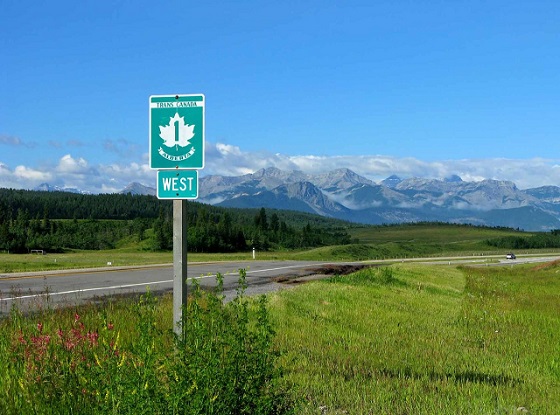Alberta
Alberta’s New Transgender Rules Could Save Young Lives

From the Frontier Centre for Public Policy
By Lee Harding
Alberta is leading the country with sensible youth gender policies. Other provinces should emulate them.
Premier Danielle Smith recently confirmed transgender surgeries will be banned for those under 18 years of age. Puberty blockers and cross-sex hormones will be prohibited for youth under 16, while those 16 to 18 years old would need parental, psychiatric, and medical approval.
Biological females will have competitive sports to themselves. Students under 16 who want to change pronouns at school won’t do so without parental consent.
Fifteen years ago, none of this would be controversial. That was before a transgender trend took hold. In the U.S., not so different from Canada, the number of children on puberty blockers or cross-sex hormones doubled from 2017 to 2021, and cases of gender dysphoria tripled.
Advocates for the transgender approach say one’s inner sense of self must be affirmed by everyone around them and by transforming their bodies as closely as possible to the gender they identify with. Otherwise, they may kill themselves.
Such ideas could be challenged on many levels. If gender and sex are separate, why transform the body? Why can’t gender and sex remain separate and go on happily? By wanting to transform their bodies, every transgender inadvertently confirms the link between biological sex and how people typically are and act.
There are other logical incongruities. Trans advocates usually believe in gender fluidity. That means someone may have one gender now, but they could have another gender soon and even change back again. This presents a problem, given current Canadian bans on conversion therapy.
Once someone identifies their gender with the opposite sex, it is illegal for anyone to oppose it in counsel or therapy, with the punishment of fines and imprisonment. Even if someone wants help to steer their inner sense of self, they cannot receive it. A new whim in their shaky self-identification is the only thing that takes them off the transformation train.
Tomboy girls and boys who like fashion should feel no need to change. But now, at an age where insecurities about weight and appearance are especially common, some teens conclude they were born in the wrong body entirely. This lie presents an awful and insidious burden–that one’s entire body is wrong.
Would it not be better to tell youth their bodies are good and give them time to grow up as the sex nature gave them and the names parents gave them?
Kierra Bell, a tomboy from the UK, never got that chance. She sued the Tavistock Clinic for transitioning her, even though as a 15-year-old she was adamant it was the right path.
“What was really going on was that I was a girl insecure in my body who had experienced parental abandonment, felt alienated from my peers, suffered from anxiety and depression, and struggled with my sexual orientation,” she later recalled.
The UK High Court ruled it was “highly unlikely” for children under 14 to have the capacity for meaningful consent to cross-sex medical interventions on gender. This capacity was also “very doubtful” for 14 to 15-year-olds. As for 16- to 17-year-olds, a court order was recommended before proceeding.
Alberta will save innumerable teenagers from a path of regret. When will other provinces follow?
Lee Harding is a Research Fellow for the Frontier Centre for Public Policy.
Alberta
Tell the Province what you think about 120 km/h speed limit on divided highways

Alberta’s government is engaging with Albertans on increasing speed limits on rural highways.
Starting Nov. 7, Albertans can share their views on modernizing speed limits on divided highways through an online survey running until Dec. 12. The survey will ask how Albertans view raising the speed limit by 10 km/h on various highways from 110 km/h to 120 km/h.
“Alberta’s government is investigating how to safely increase speed limits on divided highways, and if Albertans support increasing speed limits. We are investing more than $1.5 billion this year alone to improve highway safety and upgrade infrastructure across the province. We want Albertans to be able to drive the speed limit that the highways are designed for. Modern vehicles combined with public awareness mean we can explore higher speed limits.”
The survey will provide Albertans with the opportunity to provide input on which highways they would prioritize having a speed limit increase, their views on restricting commercial trucks from using the far-left lane on highways with three or more lanes and any other feedback that would improve driving experiences on provincial highways.
Following a review of the survey results, Alberta’s government plans to conduct a mini-trial of a 120 km/h speed limit to assess the impacts of higher speed limits on divided highways. The trial will include strong monitoring to assess driving behaviour.
Alberta’s government reminds motorists to slow down and drive to the conditions. Speed limits are set for ideal conditions. When roads are wet, icy or when there is reduced visibility, motorists should slow down.
Quick facts
- Alberta’s provincial highway network includes more than 64,000 lane kilometres of highways, about 11,700 lane kilometres of which are divided.
- The posted speed limits of Alberta’s divided highways range from 100 to 110 km/h, although the posted speed limits on segments passing through cities, towns and First Nation lands can be as low as 50 km/h due to factors such as signalized intersections, pedestrians and local access.
Related information
- The survey is available online.
Alberta
Alberta Announces Members of Class Size and Complexity Committee

A new Class Size and Complexity Cabinet Committee has been struck to address classroom challenges.
Taking action on class size and complexity
Classrooms in Alberta continue to grow and are becoming increasingly complex, and immediate action is needed to address these issues in the public education system. To meet these issues head on, the Class Size and Complexity Cabinet Committee has been created. The cabinet committee will help guide government policy and deploy resources to deal with class sizes and classroom complexity.
“We are committed to providing world-class education, and we’re building schools and funding education at a rate unprecedented in this province. This committee will help us address the concerns of teachers, parents and students around class sizes and complexity.”
Throughout November, Alberta’s government will continue work with school boards to collect data on class sizes and classroom composition. The cabinet committee will use this data to direct resources to the classrooms that need it the most. Starting in January, this data will be made available and released annually.
The Class Size and Complexity Cabinet Committee will be co-chaired by the Premier of Alberta and the Minister of Education and Childcare. It will also include non-voting members representing school boards, administrators and a teacher representative of the ATA. The committee will also hear from school boards, academic experts, teachers, educational assistants, complex needs specialists and parents to inform its decisions and guide this vital work.
“We heard teacher concerns, and we are providing solutions. The Class Size and Complexity Cabinet Committee will help us take immediate action and ensure teachers and students are given the support they need to succeed.”
In June 2025, Alberta’s government established the Aggression and Complexity in Schools Action Team to provide advice on addressing classroom complexity. The report has been received and will be released soon. Over the coming months, the cabinet committee will start rolling out solutions informed by the action team’s recommendations. In addition, the committee will guide the creation of a new inclusive education policy framework.
“The work of this committee will support teachers in responding to the growing complexity in our classrooms. We will ensure that the voices of the contributors to the initial work guide
solutions that truly improve the educational experience for students and the educators who serve them.”
“I appreciate the government’s recognition of the impact of classroom complexity and their commitment to working collaboratively for improvement. Supporting teachers ultimately improves classroom conditions and student outcomes.”
Using data collected, this cabinet committee will also guide Alberta’s government in executing its commitment to hire 3,000 new teachers and 1,500 new educational assistants over the next three years. They will also assist in identifying and prioritizing where new schools and modulars should be built, advancing the government’s commitment to invest $8.6 billion to build 130 new schools, and provide 109 modular classrooms in the growing communities that need them urgently.
Quick facts
- Members of the Class Size and Complexity Cabinet Committee include:
- Danielle Smith, Premier of Alberta
- Demetrios Nicolaides, Minister of Education and Childcare
- Jason Nixon, Minister of Assisted Living and Social Services
- Rick Wilson, Minister of Mental Health and Addiction
- Searle Turton, Minister of Child and Family Services
- Lynnette Anderson, chief superintendent, Edmonton Catholic Schools
- Nicole Buchanan, chair, Red Deer Public Schools
- Marilyn Dennis, former president of Alberta School Boards Association
- Mike McMann, superintendent, Fort Vermilion Schools and President, College of Alberta School Superintendents
- Joanne Pitman, chief superintendent, Calgary Board of Education
- Dr. Elissa Corsi, Alberta Teachers’ Association
- Only Cabinet members are voting members. Additional guests will be invited to attend and share their expertise at the discretion of the chairs.
- School boards will be required to submit data on Alberta classrooms by Nov. 24.
-

 Business17 hours ago
Business17 hours agoCBC cashes in on Carney as the news industry playing field tilts further in its favour, crippling the competition
-

 Energy2 days ago
Energy2 days agoThawing the freeze on oil and gas development in Treaty 8 territory
-

 Business2 days ago
Business2 days agoWhat Pelosi “earned” after 37 years in power will shock you
-

 Agriculture8 hours ago
Agriculture8 hours agoFarmers Take The Hit While Biofuel Companies Cash In
-

 Business2 days ago
Business2 days agoOttawa should stop using misleading debt measure to justify deficits
-

 Agriculture18 hours ago
Agriculture18 hours agoThe Canadian Food Inspection Agency’s Bloodlust for Ostriches: Part 2
-

 International2 days ago
International2 days agoBBC uses ‘neutrality’ excuse to rebuke newscaster who objected to gender ideology
-

 International2 days ago
International2 days agoLarge US naval presence in Caribbean reveals increased interest in western security


